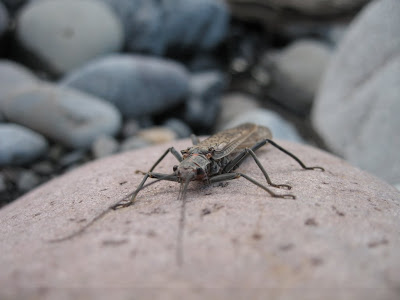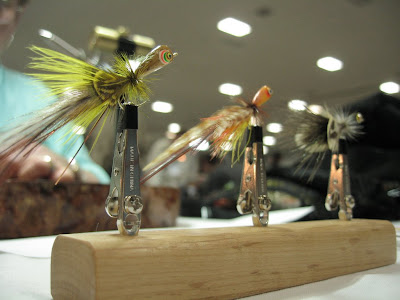Outdoor Life sucks.
I signed up for Outdoor Life magazine a while back, part of a package with Field & Stream -- you basically got it for free. I've never been impressed with the magazine, but lately I've been downright disgusted.
This was before the Jim Zumbo nightmare broke wide open, but that just adds fuel to the fire. Outdoor Life turned its back on one of its own, a sportsman and award winning writer, in order to save face with its advertisers. One word to describe that behavior: spineless.
Beyond that, 2/3 of the magazine (60 of the 90 pages) are entirely worthless. The front 30 pages is full of inane semi-outdoors related news and gag photos, mostly ads, a handful of throw away soundbite tips that no one will remember or use. The back 30 pages is all product photos and descriptions with the editorial quality of the Cabela's catalogue (no offense Cabela's, you guys are great). And then towards the very end the ads devolve into x-ray glasses, male enhancement and exploding cigars -- scam companies that advertised in the backs of comic books in the 1980s. Comic books won't even take their money anymore, but OL will.
I could go on and on: The constant shilling, the blatant dominance of the ATV set (would any of these people even think of hiking in or packing out meat on a horse or on their back?); the months spent on the "Dream Cabin" feature to sell ad space to building material companies (Who gives a shit about the dream cabin?); The "When animals attack" cartoon that illustrates increasingly preposterous scenarios every month.
But all that wasn't enough to set me against Outdoor Life. I've been working in the publishing business for the past 4 years and I know the challenges editors face. Trying to publish something real, lasting, insightful is hard work. Plus, you're at the mercy of publishers and ad revenue -- it's a tough balance. But what really turned me off was the irresponsible, sensational editorial feature in the February 2007 issue.
From Outdoor Life: Hell Hounds! Wolf Attack -- A fight to the death! Our exclusive photo gallery of a wolf eating a deer -- WHILE IT'S STILL ALIVE! -- raises questions whether wolves are noble predators or nature's monsters.
So let me get this straight, wolves doing what they are designed to do (eat deer) makes them "nature's monsters"? Right. So what the hell are we hunters? At least the wolves are engaging with their prey and fighting for their food on their own terms.
Other interesting quotes from the article: Wolves may have killed 200-300 dogs in Idaho -- according to estimates by a guy who got phone calls about the problem after his dogs were attacked by wolves .
OL also throws out this gem: "Wolf attacks on livestock, game animals, pets and even people are becoming an almost weekly occurrence." What does that mean? Wolves somewhere are eating something at some point, almost weekly!
OL pulls a couple canned, out-of-context quotes from 2 wildlife officials in a sidebar, but other than that, no biologists are given a voice.
Check out
Oregon Dept of Fish and Wildlife's stance on wolves.
I'm not against hunting wolves. I think it would be a great fund raiser for state wildlife departments. Charge $100 per tag and sell them by lottery. What I don't want to see is wolf extermination, which seems to be what this magazine is advocating.
I'd like to end with a quote from
Ed Abbey's, Desert Solitaire:
We need more predators. The sheepmen complain, it is true, that the coyotes eat some of their lambs. This is true, but do they eat enough? I mean, enough lambs to keep the coyotes sleek, healthy and well fed. That is my concern. As for the sacrifice of an occasional lamb, that seems to me a small price to pay for the support of the coyote population. The lambs, accustomed by tradition to their role, do not complain; and the sheepmen, who run their hooved locusts on the public lands and are heavily subsidized, most of them as hog-rich as they are pigheaded, can easily afford these trifling losses.
I won't hold my breath for Outdoor Life to ask me to write for them.












































